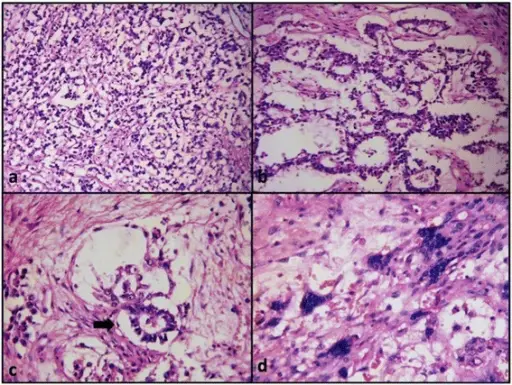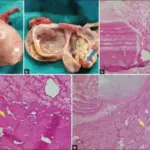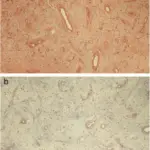Mixed germ cell tumors are lesions containing more than one pure pattern.
What is the Pathology of Mixed Germ Cell Tumors?
The pathology of mixed germ cell tumors is:
-Etiology: The cause of mixed germ cell tumors is genetic, environmental factors, prenatal factors, idiopathic causes.
-Genes involved: None.
-Pathogenesis: The sequence of events that lead to mixed germ cell tumors, grows when a germ cell neoplasia in situ or a seminoma cell turns mutated.
-Morphology: The morphology associated with mixed germ cell tumors shows pied, areas of necrosis, and hemorrhage.
-Histology: The histology associated with mixed germ cell tumors shows histologic of other germ cell tumors.
How does Mixed Germ Cell Tumors Present?
Patients with mixed germ cell tumors typically affect males present at an age range of 20 to 60 years. The symptoms, features, and clinical findings associated with mixed germ cell tumors include those of germ cell tumors.
How are Mixed Germ Cell Tumors Diagnosed?
Mixed germ cell tumors are diagnosed through Laboratory studies such as detecting elevated β HCG, LDH, α fetoprotein, and biopsy.
How are Mixed Germ Cell Tumors Treated?
Mixed germ cell tumors are treated through surgery intervention and medical chemotherapy.
What is the Prognosis of Mixed Germ Cell Tumors?
The prognosis of mixed germ cell tumors is poor.



